HEEEEEEEYYY BLOG
11,07,2018
Hiiiiii animation is new to me, very nervous but excited to learn.
30 sec animation
A strong story is what makes it successful.
Thinking about a story and character/s for the 30 second animation????,
BEGGINING... MIDDLE.... END..
LOVE? COMEDY? DRAMA?
random ideas?
Jelly fish family
Have a go at drawing person like character......
Monster under the bed, comedy??
character the resemble one of my humorous kids?
Beach trolls that live in the sand dunes, Related to children
Building a sand castle, tide is out yaaaay, cheeky troll says '' lets have a sand castle completion?''......... Trolls work hard with spades etc
next min they turn around an cheeky troll, has drawn a sandcastle masterpiece... all other trolls give disgust and confused facial expressions. and the tide comes in and destroys their work, cheeky troll grins and says '' I WIN''
Morel of the story, not everyone's interpretation of an idea is the same.
Snowmen characters that talk ??
Talking trees ??
12/07/2018.... 9.08?am
hey Thursday, still unsure of what I'm going to choose, I have soooo many different images of what to draw, cute talking toad stalls, easy and simple to do, day of the dead group? like the facepainting I'm doing at the moment.
12/07/2018 2.10pm
HERE ARE SOME IMAGES I LIKE... maybe they will give me some cool ideas to draw.
Friday night...
SUNDAY 15/07/2018
HEEEY had a mager head ache from an over load of images through my head, not too much story lines flooding the brain,just pictures, but i think i may have decided on...........
OK!!!!!! SO IF I DO THIS RIGHT, GET THE RIGHT DRAMATIC MUSIC, AND CLOSE UP DRAMATIC FACIAL EXPRESSIONS, THIS COULD BE PRETTY FUNNY.
START......
STARTING OF WITH A VIEW OF THE BACK OF A KID AT THE BATHROOM BASIN
SOUND....... WATER RUNNING, TAP TURNING OFF, DRYS HER HANDS ON TOWEL THEN WALKS OUT THE DOOR.
MOMENT OF SILENCE....................
BACKGROUND BATHROOM SCENE, WHERE THE BASIN IS BESIDE THE BATH,
SOAP, SHAMPOO, ARE ON THE SIDE OF THE BATH,
TOOTHBRUSH ARE SITTING ON THE BASIN...
SOAP THEN SHAMPOO AWAKEN AND COME TO LIFE BOOOOOMMM
SOAP WHISTLES, THEN TOOTHBRUSH AND TOOTH PASTE AWAKEN...BOOOOM
EVERYONE SMILES WITH EXCITEMENT.....
TOOTH BRUSH GRABS THE FLOSS TIES IT TO THE TAP, SLIDES DOWN ONTO THE BATH, FOLLOWED BY TOOTHPASTE..
TOOTHBRUSH......"I'M GOING FIRST THIS TIME !!"
SHAMPOO....... JUMPS UP AND DOWN A BIT TOO HARD, AND SQUIRTS SHAMPOO DOWN THE SIDE OF THE BATH
SHAMPOO GOES BRIGHT RED!!!! LAUGHS A GOOFY LAUGH, THEN SAYS ''OOOH WELL''
AND SLIDES DOWN THE BATH WITH EXCITEMENT.
NEXT FOLLOWS TOOTHPASTE, AND TOOTHBRUSH
FRONT ON VIEWS OF THEIR HILARIOUS FACIALS AND MOVEMENTS
AM THINKING, DEEP VOICES, THEN WHEN THE SOAP PUSHES OFF TO SLIDE, HE HAS A SUPER HIGH PITCH SQUEAL WHICH RAISES EYE BRAWLS THEN SLOWLY TURNS INTO WORRY, THEN EYE BALLS BULGING, MOUTH OPENING CHEEKS REDDENING, JAWS GRINDING.
AND THE SPECTATORS WITH A HANDS OVER MOUTHS SHOCKED EEEEKKKK OOOOOOOOO LOOK.
aaaaaaaand
THUDDDDDD
BANG
moment of silence..........
eye balls pop through the door, curious, then the mum (Human) looks at the soap on the ground, yells out "Honey did you use the soap????
FUNNY VOICE SAYS
YOUR SOAPS GETTING BORED
DONT FORGET TO WASH!
QUICK SOUNDS OF IN YOUR FACE
BOOOOOOMMMM
THE END.
googled....
facial expressions.........

Found this picture i likes,
Had underneath the picture, Image maybe subject to copyright.
What is "Copyright"?
Which types of work are subject to copyright?
Copyright ownership gives the owner the exclusive right to use the work, with some exceptions. When a person creates an original work, fixed in a tangible medium, he or she automatically owns copyright to the work.
Many types of works are eligible for copyright protection, for example:
- Audiovisual works, such as TV shows, movies, and online videos
- Sound recordings and musical compositions
- Written works, such as lectures, articles, books, and musical compositions
- Visual works, such as paintings, posters, and advertisements
- Video games and computer software
- Dramatic works, such as plays and musicals
The Copyright Office has information online, and you can check with a lawyer if you want to know more.
Is it possible to use a copyright-protected work without infringing?
Yes, in some circumstances, it is possible to use a copyright-protected work without infringing the owner’s copyright. For more about this, you may wish to learn about fair use. It is important to note that your content can be removed in response to a claim of copyright infringement, even if you have...
- Given credit to the copyright owner
- Refrained from monetizing the infringing content
- Charged for a copy of the content in question
- Noticed similar content that appear elsewhere on the internet
- Purchased the content including a hard or digital copy
- Recorded the content yourself from TV, a movie theater, or the radio
- Copied the content yourself from a textbook, a movie poster or photograph
- Stated that “no copyright infringement is intended”
Some content creators choose to make their work available for reuse with certain requirements. For more about this, you may wish to learn about the Creative Commons license.
Can Google determine copyright ownership?
No. Google isn’t able to mediate rights ownership disputes. When we receive a complete and valid takedown notice, we remove the content as the law requires. When we receive a valid counter notification we forward it to the person who requested the removal. If there is still a dispute it’s up to the parties involved to resolve the issue in court.
What is the difference between copyright and trademark? What about patents?
Copyright is just one form of intellectual property. It is not the same as trademark, which protects brand names, mottos, logos, and other source identifiers from being used by others for certain purposes. It is also different from patent law, which protects inventions.
What is the difference between copyright and privacy?
Just because you appear in a video, image or audio recording does not mean you own the copyright to it. For example, if your friend took a picture of you, she would own the copyright to the image that she took. If your friend, or someone else, uploaded a video, image or recording of you without your permission, and you feel it violates your privacy or safety, you may wish to file a privacy complaint.
Copyright Infringement Notification Requirements
The easiest way to file a complaint is to use our legal troubleshooter.
Copyright notifications must include the following elements. Without this information, we will be unable to take action on your request:
1. Your contact information
You’ll need to provide information that will allow us to contact you regarding your complaint, such as an email address, physical address or telephone number.
2. A description of your work that you believe has been infringed
In your complaint, be sure to clearly and completely describe the copyrighted content you are seeking to protect. If multiple copyrighted works are covered in your complaint, the law allows a representative list of such works.
3. Each allegedly infringing URL
Your complaint must contain the specific URL of the content you believe infringes your rights, or we will be unable to locate it. General information about the location of the content is not adequate. Please include the URL(s) of the exact content at issue.
4. You must agree too and affirm both of the following statements:
- “I have a good faith belief that use of the copyrighted materials described above as allegedly infringing is not authorized by the copyright owner, its agent, or the law.”
- And
- “The information in this notification is accurate and I swear, under penalty of perjury, that I am the copyright owner or am authorized to act on behalf of the owner of an exclusive right that is allegedly infringed.”
5. Your signature
Complete complaints require the physical or electronic signature of the copyright owner or a representative authorized to act on their behalf. To satisfy this requirement, you may type your full legal name to act as your signature at the bottom of your complaint.
HERE IS A SNIPIT SCREENSHOT OF SOME OF THE INFO.
IM NOW GOING TO SEARCH SOME FACIAL EXPRESSION
CHARTS TO GET SOME IDEAS FOR MY CHARACTERS LOOKS....
snipit.....screen shot
copy/paste
How to Draw Cartoon Emotions & Facial Expressions Drawing Tutorials
You can change the expressions on your face without changing your emotions (by acting) but don’t you wish that drawing facial expressions was just as easy? Well, with practice, you will see that it is just this easy and a LOT of fun to try. Most facial expressions can be easily made by changing the size, shape, and relationship of eyes, nose, and mouth and other parts of the face such as eyelids and eyebrows. If you want to be a cartoonist, an illustrator, an artist or just simply good at drawing, it would be a good idea to start studying people’s faces. Keep a sketchpad with you at all times and when you see people’s faces change in emotion, quickly draw a simple shape (as seen below) to chart out all of the differentt expressions that a person’s face can make. It would also be a good idea to study your own face in the mirror as you make silly and crazy faces. This is a lot of fun and is a good drawing exercise for beginner artists.
You Might also find the previous drawing article helpful : How to draw Cartoon Emotions and Expressions in Characters Eyes
We began your facial expressions chart below…print it out and keep it as reference. Try to draw these faces in your new chart.
Facial Expression : Anger … Aggression
Facial Expression : Agitation
Facial Expression : Angry … Furious … Violent Anger
Facial Expression : Calm and Composed … really no emotion at all … maybe a blank stare even
Facial Expression : Discouraged, Sad, Disappointed
screen shot.........
 |
| clicked on google chrome, typed in drawing facial expressions.............. then found this........ |

















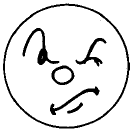

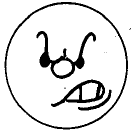
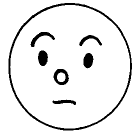
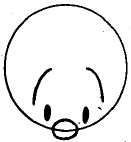
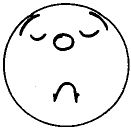

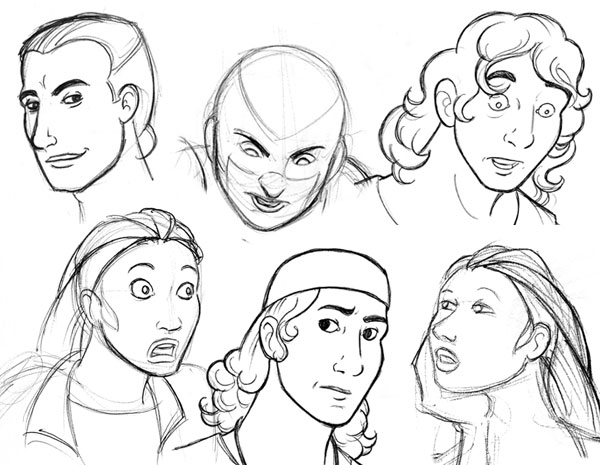









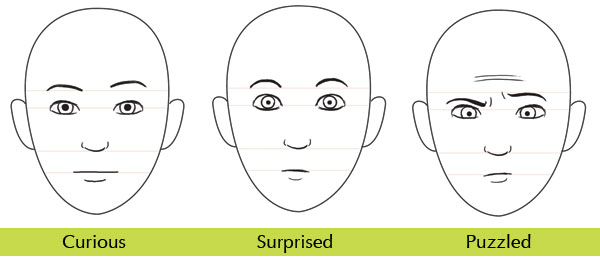

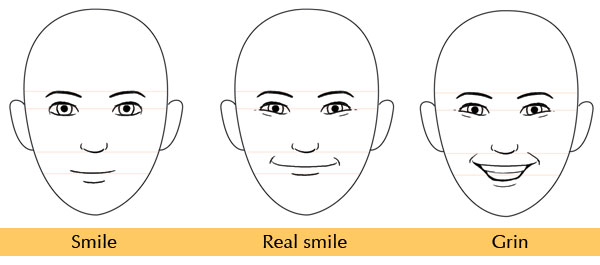















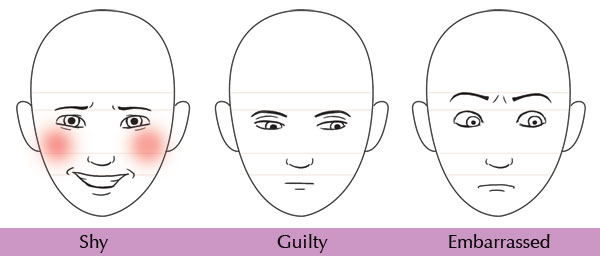

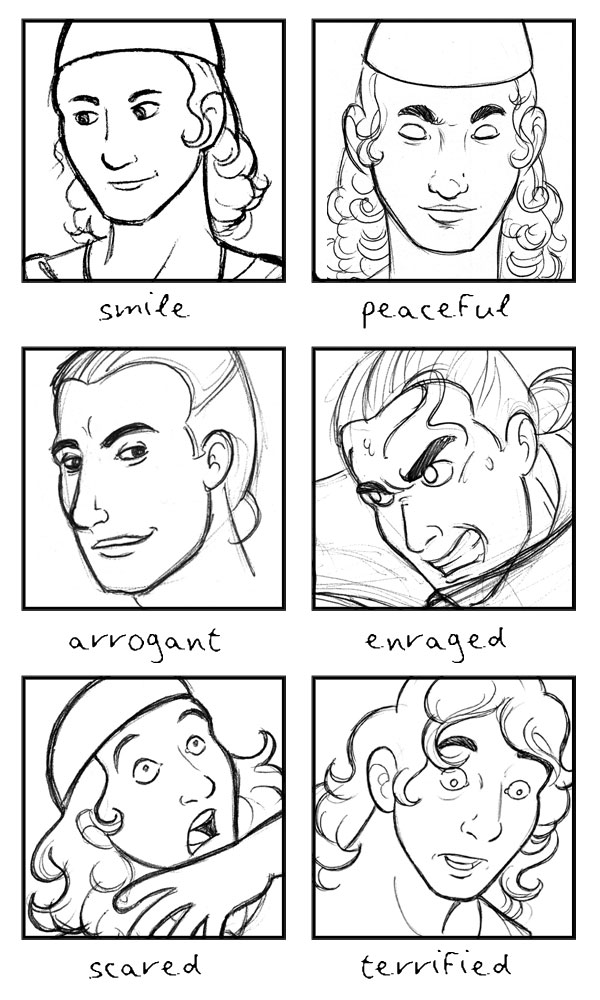









No comments:
Post a Comment